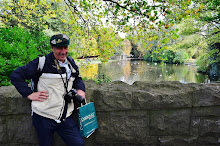THE HEATHLAND – BEYOND HOLLYWOOD
Having
researched the location I picked something I would remember, Hollywood Street,
no boulevard here. The street I wanted
was two past that. I’d chosen not to use
google maps in order to save batteries, don’t want to run low while I’m taking
photographs. The Princes Highway was busy despite lockdowns so I gratefully
turned off and headed up Dowling Street to one of two main entrances.
It was
there I was stunned. For decades I’d
tried to get a meaningful book on wildflowers, I’d even spent money for heavens
sake. Yet, for some reason, I could never
crack a relevant one. In Thredbo I was
assured that the volume I’d just purchased would identify plants I’d seen and
photographed that day. It didn’t.
So, imagine
my surprise when I stopped at the entrance to South Pacific Heathland
Reserve. Here were some laminated sheets
with relevant plant information but, just in behind them, was a free pamphlet
that identified half the plants that I’d seen today. If there’s an annual contest for the most
useful brochure, City of Shoalhaven would surely romp in. There was a map as well, take a bow
Shoalhaven.
Variable Smoke Bush
The
trustees in charge of the 14 hectares of reserve won a best in the state award
in 2017. The brochures, track and
lookouts are all well developed and when you get a brochure it actually relates
to the trails. There are appropriate
signs so it’s almost impossible to get misplaced and you certainly can’t get
lost because you’re only ever 500 metres from an intersection. In the whole reserve there’s less than 4 kms
of trail, no hills, protected by the forest.
No wonder it’s popular with locals.
Fab Flower
There’s
only 14 hectares of the reserve but it’s clear that people care about it,
particularly bearing in mind that there was a protest just two days ago about
developers wanting to clear more of the wonderful forest that’s left at
Narrawallee just down the road. It’s
always sad when some of the reasons for people moving to an area
disappear. Glossy black parrots are
already endangered here and the bushfires didn’t help.
Hardenbergia
Rennies
Beach was my ultimate destination, so I thought. I didn’t even know it existed until one week
earlier. There’s many kilometres of
coast around here and everywhere I’ve been, you can’t help but notice there’s
small unnamed islands and adjacent rock shelfs in many places. Their influence on wave patterns is
undeniable but, today, the swell is having a day off. However, on the plus side, the colours are
brilliant, the blues and greens as stunning as any you’ll see.
Getting
there IS half the fun. The recent
sunshine has sparked interest from the plants of the coastal heath. Windblown though it is, flora survive and
thrive here on either side of the narrow bush trail that I decide to ride. Here in the land of acacia, she-oaks and
banksia there’s any number of flowers competing for space on the floor. On the reverse side, the fire, started by
arsonists in 2018, has left its scars on more than one place and the remnants
of the banksia stand like wizened old men at odd angles. In time, their seeds will take hold and it
will all come again but, for the time being, the low growing flowers are having
a field day, literally and figuratively.
The wash
sound of the sea floats up the escarpment, enchanting in its own way,
controlled by the offshore winds that were dipping over the hill to the waters. Sitting on the cliff edge on this gorgeous
day I took time out just to recharge my batteries.
The
lookouts here and on Wardens Headland appear to have no maintenance schedule as
the vegetation steadily climbs in front of the lookouts, blocking some of the
view on all but one I’d been to. Many
are the feet that have gone outside the protective barriers in order to get a
decent shot. Still, parts could be
viewed and the presence of that ocean sound just wafted all over you, something
soothing about being beside an active sea.
Sheoak
However,
not far away, along a narrow unnamed track, there’s a better viewpoint because
of the fires. Naked banksia branches
indicate dead trees whose seeds will take a few years to re-emerge. Meanwhile, the view is significantly enhanced
so I sit down with a pie and drink and soak it all up.
Just north
nearby is Rennies Beach, access to which is via a steep path off Dowling Street
but, from this viewpoint, defining individual beaches is problematic,
especially when you’re not a local. What
you see is a long stretch of sand interspersed with small headlands and/or a
rock shelf. It’s quite beautiful,
enhanced by the sublime colours of the ocean, changing from green to blue the
further offshore you look with dark patches indicating rock slabs. It’s the definition of sublime, and it would
draw me back time and time again.













